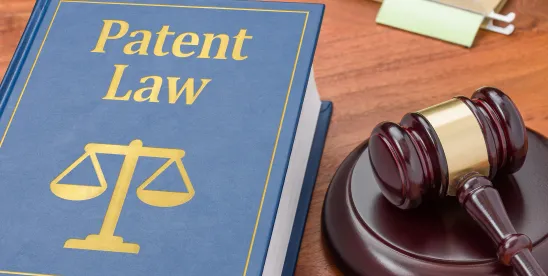The US Court of Appeals for the Federal Circuit affirmed a Patent Trial & Appeal Board decision that a private sale of a product embodying the claimed invention did not qualify as a “public disclosure” under 35 U.S.C. § 102(b)(2)(B). Sanho Corp. v. Kaijet Technology Int’l Ltd, Inc., Case No. 23-1336 (Fed. Cir. July 31, 2024) (Dyk, Clevenger, Stoll, JJ.)
Sanho owns a patent directed to a port extension apparatus designed to enhance connectivity of end-user devices (such as laptops) with other devices (such as printers). Kaijet petitioned for inter partes review (IPR) challenging certain claims of Sanho’s patent, arguing that the claims were obvious based on a prior art reference. The Board found that the patent claims were invalid because of the prior art reference’s earlier effective filing date. Sanho argued that a prior sale of its HyperDrive device by the inventor of the patent should disqualify the reference as prior art. However, the Board determined that Sanho failed to demonstrate a public disclosure of the HyperDrive sale before the prior art reference’s effective filing date. Thus, the patent was invalidated. Sanho appealed.
The Federal Circuit affirmed, explaining that the America Invents Act (AIA) redefined prior art, shifting from a first-to-invent to a first-inventor-to-file system. Under the AIA, prior art includes patents and applications filed before the patent’s effective filing date subject to exceptions for public disclosures by the inventor. Sanho argued that the HyperDrive sale fell into this exception.
The Federal Circuit dismissed Sanho’s argument that the phrase “publicly disclosed” in § 102(b)(2)(B) should encompass all types of disclosures described in § 102(a)(1), including private sales. The crux of the issue was whether placing an invention “on sale” was tantamount to a “public disclosure” under § 102(b)(2)(B). The statute states that a disclosure is not prior art if the subject matter was publicly disclosed by the inventor before the effective filing date of the prior art. Sanho argued that “publicly disclosed” includes any disclosure, even private sales. The Court disagreed, explaining that the statute’s use of “publicly” implies a narrower scope than just “disclosed.” The Court noted that the purpose of this exception is to protect inventors who make their inventions available to the public before another’s patent filing.
The Federal Circuit also relied on legislative history in support of the conclusion that “public disclosure” in § 102(b)(2)(B) means the invention must be made available to the public. Sanho argued that as long as there are no confidentiality requirements, all disclosures, even private sales, should constitute public disclosures. Again, the Court rejected that argument, noting that the statute differentiates between “publicly disclosed” and general “disclosures,” implying different meanings.
The Federal Circuit determined that § 102(b)(2)(B) protects inventors who publicly disclose their inventions from subsequent disclosures by others, ensuring that prior public disclosure by the inventor prevents a third party’s disclosure from becoming prior art. This provision aims to encourage inventors to share their innovations with the public.
Practice Note: For a disclosure to qualify as “public” under the AIA, it must make the invention accessible to the public and must not merely be a private or nonconfidential sale.



 />i
/>i
